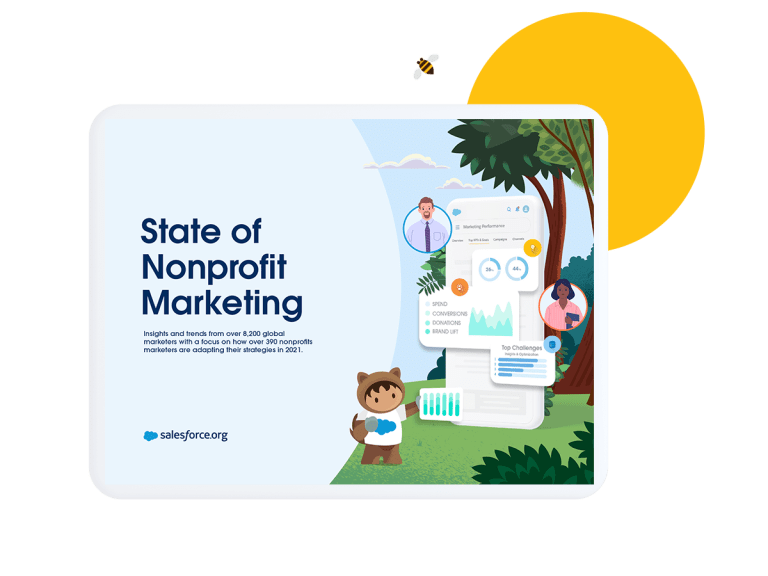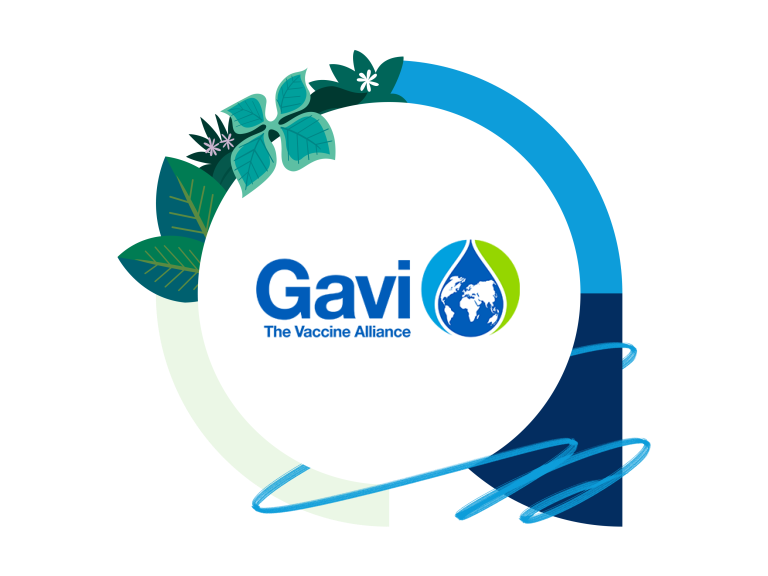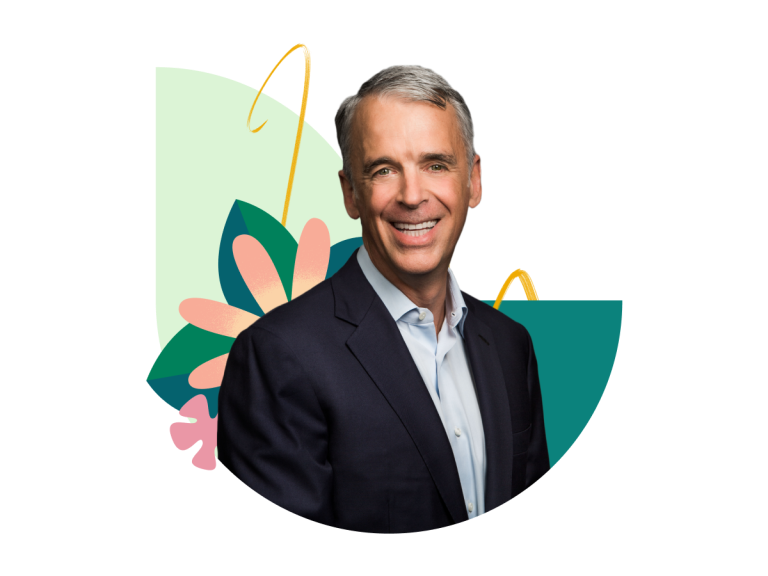The world is always changing—and to keep up, fundraising professionals have to change with it.
In this article, you’ll learn what fundraisers need to start doing today to sustain and grow revenue from individual donors tomorrow.
4 Key Trends in Nonprofit Fundraising
Understanding how the nonprofit fundraising landscape is changing can help you prepare your organization for the future. Let’s look at key trends in nonprofit fundraising.
1. New Digital Expectations from Donors
Expectations have changed. The last few years forced us to spend more time online than ever before. We spent much of this time shopping for goods and services on Amazon and other digital marketplaces. These interactions have conditioned donors to expect effortless experiences every time they go online, including when they make a donation!
It’s hard to keep up—but it’s critical that we do. We need to meet donors where they are and ensure we’re addressing their needs and preferences as they spend more time online. We cannot rely on the status quo anymore.
2. Changes in Privacy Practices
Privacy-related changes in technology platforms (like browsers and mobile operating systems), regulatory actions, and consumer preferences are forcing organizations to rethink how they collect, analyze, and use data to engage with their audiences. Because privacy practices have become more stringent, organizations are focusing more on collecting first-party data (information a company collects directly from consumers and constituents).
3. Less Trust in Nonprofits
We face a trust crisis. Worldwide, people distrust institutions at record levels with nearly 6 in 10 saying they tend to distrust something until they see evidence it is trustworthy. Last year, trust in nonprofits fell in countries like Germany, the US, the UK, and the Netherlands. In these countries, NGOs face higher levels of distrust than other places in the world.
The good news is nonprofits are generally the second-most trusted institutions behind only business. This presents an opportunity for nonprofits to become a go-to source of information for people looking to make a positive change in the world.
4. Fewer Donors
The number of U.S. households that give dropped from 66% in 2000 to 49% in 2018. Many experts predict this trend to continue in 2022 and beyond. With a shrinking donor pool, retention is becoming even more critical to sustainability. And yet, 85% of nonprofits surveyed for our 2021 Nonprofit Trends Report believe donor retention is getting harder. With economic uncertainty looming, fundraisers need to double down on donor retention.

Nonprofit Trends Report
See how 1,600 nonprofit employees met or exceeded their top goals.
6 Nonprofit Fundraising Strategies for a Changing World
Given the state of nonprofit fundraising, it can be harder than ever to hit your fundraising goals. There are six key strategies that you should adopt to build sustainable revenue streams.
1. Make Online Fundraising Easy
Think about a foundation program officer you have a strong relationship with. When you first met, did you set the date, time, and location? Of course not! You likely met when and where it was convenient for them. Connecting with individual donors should be no different.
You need to meet donors in the digital spaces where they find information, look for inspiration, and connect with like-minded people. Often this means making sure your content shows up on channels where people are already browsing, like:
- Search engines
- Social media platforms
- Emails
- Other blogs and websites
Email is still a nonprofit’s most powerful engagement channel. Even so, research has shown it can be surprisingly difficult to sign up for a nonprofit’s newsletter. Make sure to test all sign up forms before deploying, and make them easy to find on your website and other channels.
Making your organization easy to find online is just the first step. In our State of Nonprofit Marketing report, 82% of marketers said the ability to meet constituent expectations depends on their organization’s digital capabilities. Fundraisers need to partner closely with their marketing colleagues to make it easy for supporters to engage with organizations on a variety of digital channels.

State of Nonprofit Marketing Report
Learn the latest insights and trends on how nonprofit marketers have adapted their strategies to support fundraising in 2021.
2. Provide Valuable Content
Good content on your website inspires action and is often the first touch point on someone’s journey from stranger to donor and advocate. You can use content your audience values as a type of currency offered in exchange for email addresses and other personal information. This first-party data is essential for staying in touch, cultivating interest, and eventually asking for a donation.
Here are a few ideas for what you might offer prospective donors in exchange for their email and other data:
- Breaking news on issues they care about
- An advocacy toolkit to help change a law or policy
- Access to a private LinkedIn group for networking with like-minded professionals
Once you have an individual’s personal information, you can start cultivating a relationship by providing content and opportunities to engage with your mission. It’s important to provide information, stories, and calls-to-action that resonate with their specific interests and engagement preferences. Otherwise, you risk a potential donor unsubscribing from your list.
It will likely take some time to collect all the personal data you need to deliver compelling content. Plan to collect some information about their interests and preferences along with their email or phone number. You’ll also want to track how supporters engage with specific types of content to gain a more nuanced understanding of what they want to receive.
3. Segment Your Audience
Segmentation involves grouping audiences by interests, behavior, and preferences for personalized cultivation and solicitation. Meaningful segmentation gives you the ability to engage prospective and active donors in ways that build trust and strengthen their connection to your mission. For example, you may want to send an appeal to volunteers who’ve never made a gift or invite new donors to volunteer for the program they funded. We know retention is higher for monthly donors so you might launch a sustainer program and target new donors for a recurring gift.
Grouping supporters by how they engage with your organization over time can often help you decide the next best cultivation step to take. For example, did a donor just hit their 1-year anniversary volunteering for your organization? Recruit a board member to make a gift in honor of their volunteer service. Does a donor consistently respond to appeals throughout the year? Invite them to join your monthly giving program!
4. Convert Known Supporters
When conditions make external donor acquisition more difficult than usual, focus your time and attention on people already in your system. Invest in programs to convert, retain, and upgrade the volunteers, advocates, and donors that already support your mission.
Volunteers and advocates are among your organization’s most passionate supporters. Their first-hand experience with your mission has primed them to make that first gift. However, don’t assume generic appeals will move them to donate. In fact, current supporters expect a higher degree of personalization because they expect your organization to know them.
The key to converting volunteers and advocates to donors, and then retaining them as donors, is having a single view of all the ways they engage with your organization. Unifying data in a single system gives fundraising visibility into a prospect’s full history with the organization, which makes it easier to tailor cultivation activities, appeals and stewardship.

Customer Story
Canadian Cancer Society
Pulling it all together into a single place and seeing our donors as whole human beings that have different ways of interacting with us was game changing.”
Andrew Caswell, National CRM Implementation Lead, Canadian Cancer Society
5. Thank and Report
Expressing sincere gratitude for their contributions is the first step in building trust with your donors. As humans, the need to feel that our actions matter can be a powerful motivator. Showing thanks is a simple yet powerful way to validate donors and strengthen their emotional connection to your mission. Genuine gratitude communicates lets supporters know they are valued while creating a sense of shared purpose.
How you express gratitude should be personal because giving is personal. A personalized thank you, whether handwritten or emailed, signals sincere gratitude upon which trust is built and personalizes a donor’s experience.
Here’s some examples:
- Did the donor give to support a specific program? Include a note in your message about how their gift will be used to make an impact.
- Was the gift solicited by a board member? Arrange for the thank you message to come from the board member.
For today’s donors, expressing gratitude isn’t enough. Donors expect a higher degree of accountability from the nonprofits they support than they have in the past. In fact, 7 in 10 nonprofits surveyed for our Nonprofit Trends Report, 4th edition (2021) said their donors expect digital access to key impact performance metrics (KPIs).
Many organizations are responding by being more transparent, with 31% saying they’ve recently provided donors online access to dashboards showing the impact of their gifts in action. Of those who have made this change, 86% say it was impactful.
-
7 in 10say donors expect online access to KPIs
-
31%recently increased transparency
-
86%say increased transparency has been impactful
Make it a practice to always thank donors and provide an update on their impact before asking for another gift. Here’s a sample gratitude and reporting cadence:
- Within 3 days of gift – send a personalized thank you message
- Within 30 days of gift – report on the impact of a donor’s gift
- Every 3 months thereafter – send regular impact updates
6. Take Care of Data
Maintaining relationships with hundreds or thousands of people means keeping track of a lot of information. Your ability to track and use that information can have a tremendous impact on your ability to deepen relationships with your supporters. Clean, centralized data is vital for the effective use of information.

Customer Story
Gavi
We take care of our data. We avoid manual entry, we store it and handle it properly, and we have one source of truth for it. We have a culture of treating data as an asset and using it for action and insight. With it we’re able to make faster, more accurate decisions, increase transparency on our funded programs and reduce operational costs. The speed and cost savings mean we can get vaccines out more efficiently, maximizing disease prevention, and saving lives.”
Laura Boehner, Chief Technology & Knowledge Officer, GAVI The Vaccine Alliance
Cleaning up data can take many different forms. You can remove duplicates and fill in misinformation, and you can also examine data sources and make sure that for each channel you’re using — whether it’s your website, social media platforms, email or others, the data is flowing correctly into a single central location. Centralizing data gives you a complete view of all the ways donors engage your organization. It makes it easier to see where things are doing especially well, and where they’re starting to fall behind.
Having a complete historical view of how your various online and offline fundraising channels perform also provides a solid baseline for accurate revenue forecasting, which is crucial for resource planning. And yet, 69% of nonprofits surveyed in the fourth edition of the Nonprofit Trends Report said they were unable to accurately forecast revenue from their fundraising campaigns. This comes as no surprise given the proliferation of digital fundraising channels and tools that don’t talk to each other. Accurate revenue forecasting requires unifying data from multiple sources in a single system.
Another important aspect of taking care of data is protecting it. Having people’s personal details on file puts nonprofits in a position of trust, with responsibility for keeping that data safe. Limited budgets, a lack of rigorous security measures, and legacy data-storage systems all make nonprofits vulnerable to malicious cyberattacks. Widespread adoption of remote work triggered by the pandemic have only magnified these issues.
Organizations need to be prepared both with an internal strategy and training and tools to help protect data and have an understanding of how regulation changes will affect their organization. At Salesforce, trust is our #1 value, which is why security is natively built into our infrastructure, network, and application services. We also offer products that provide an additional layer of security.

Nothing is more important to our company than the privacy of our customers’ data.”
Parker Harris, Co-Founder, Salesforce
Your organization can effectively navigate uncertain times by focusing on what’s within your control. When developing your next fundraising plan, be sure to include strategies and activities for making progress in these areas:
- Make Engagement Easy – Develop a presence in the virtual places potential supporters look for information.
- Provide Valuable Content – Offer something of value in exchange for persona data.
- Segment Audiences – Cultivate supporter interest with relevant content and opportunities to engage.
- Convert Supporters – Target volunteers and advocates to make that first-gift.
- Take Care of Data – Centralize data in a single, trusted system.
- Thank and Report – Always thank and report impact before making another ask.
Build the Relationships That Drive Fundraising Impact
Learn how Nonprofit Cloud is the only integrated CRM platform that delivers a unified view of all your supporters to drive your fundraising strategy.
